Hola una vez más.
Hi again.
Hi again.
En el siguiente enlace podéis ver nuestros próximos viajes fotográficos y de observación de aves y mamíferos nacionales y al extranjero. Espero que os gusten y os animéis a venir conmigo. Una experiencia que nunca olvidareis.
In the following link you can see our next national and foreign Birds and Mammals photographic and observation trips. I hope you like them and I encourage you to come with me. An experience that you will not forget.
En esta ocasión os muestro algunas de las aves que vimos en nuestro viaje a Valencia y Alicante del 30 de abril al 2 de mayo.
This time I show you some Birds we saw on our trip to Valencia and Alicante from April 30 to May 2.
This time I show you some Birds we saw on our trip to Valencia and Alicante from April 30 to May 2.
El tiempo estuvo bien aunque en algunos momentos atravesamos varias tormentas que, gracias a Dios, nos cogieron cuando estábamos en la furgoneta.
The weather was fine although at times we went through several storms which, thank God, caught us when we were in the van.
Os voy a enseñar los que pude fotografiar por los lugares que visitamos.
I'm going to show you the ones I was able to photograph in the places we visited.
Día 30. Marjal del Moro y desembocadura del río Carraixet:
Day 30. Marjal del Moro and mouth of the Carraixet River:
Day 30. Marjal del Moro and mouth of the Carraixet River:
Me sorprendió ver que el centro de interpretación está cerrado los fines de semana y festivos. También encontrar la entrada a este espacio protegido y de mucho interés para la observación de aves no es nada sencillo pues no ponen ningún tipo de cartel anunciándolo. Menos mal que tenemos los navegadores. Además no indicaba nada de que para pasar a la zona de la playa por el camino principal había que atravesar muchas zonas inundadas. Fue toda una aventura. En la foto un fumarel cariblanco (Chlidonias
hybridus).
I was surprised to see that the interpretation center is closed on weekends and holidays. Finding the entrance to this protected space and of great interest for bird watching is also not easy because they do not put up any type of sign announcing it. Good thing we have browsers.In addition, it did not indicate that in order to get to the beach area along the main road, it was necessary to cross many flooded areas. It was quite an adventure. In the photo a Whiskered
Tern.
Otro.
Another one.
Carrán patinegro (Thalasseus
sandvicensis).
Sandwich
Tern.
Canastera común (Glareola
pratincola).
Collared
Pratincole.
En la zona cercana a la playa se veían muchas gaviotas de Audouin (Larus
audouinii).
In the area near the beach many Audouin's Gulls can be seen.
Vimos varias garzas imperiales (Ardea purpurea) pero ninguna quiso que le sacase una buena foto.
We saw several Purple Herons but none let me to take a good photo.
Los lirios acuáticos estaban en flor.
Water Lilies were in bloom.
Un macho de porrón europeo (Aythya
ferina).
A Common
Pochard male.
Este andarríos chico (Actitis
hypoleucos) estaba comiendo cochinillas de la humedad.
This Common
Sandpiper was eating Pill Bugs.
Vimos también varios patos colorados (Netta
rufina). En la imagen un macho.
We also saw several Red-crested
Pochard. In the photo a male.
Hembra.
Female.
Y esta con crías.
And this one with ducklings.
Somormujo lavanco (Podiceps
cristatus).
Great
Crested Grebe.
Un zampullín común (Tachybaptus
ruficollis).
A Little
Grebe.
Una hembra de cernícalo vulgar (Falco
tinnunculus).
A Common
Kestrel female.
Garcilla bueyera (Bubulcus
ibis).
Cattle
Egret.
Una bonita cerceta pardilla (Marmaronetta
angustirostris).
A beautiful Marbled Teal.
Otra.
Another one.
Había 4 espátulas comunes (Platalea
leucorodia).
There were 4 Eurasian
Spoonbill.
Flamenco común (Phoenicopterus
ruber) subadulto.
Greater Flamingo subadult.
Una vista desde uno de los observatorios. Aprovecho esta oportunidad para comentar que hacía 4 años que no visitaba este humedal y he de decir que me llevé una decepción muy grande pues en el observatorio de aves que está pegado a la playa solo se veía vegetación y nada de las colonias reproductoras que yo recordaba de las visitas anteriores. Una pena que no se conserven las cosas y que ya no se pueda ver nada más que cañas.
A view from one of the observatories. I take this opportunity to comment that I had not visited this wetland for 4 years and I have to say that I was very disappointed because in the bird observatory that is attached to the beach you could only see vegetation and none of the breeding colonies that I remembered from previous visits. A pity that things are not preserved and that you can no longer see anything but reeds.
En la desembocadura del río Carraixet pudimos observar esta garceta común (Egretta
garzetta).
At the mouth of the Carraixet river we were able to observe this Little
Egret.
Una focha común (Fulica
atra) en su nido.
A Common Coot in its nest.
Martinete común (Nycticorax
nycticorax).
Night
Heron.
Y varios calamones comunes (Porphyrio
porphyrio).
And several Purple Gallinule.
1 de Mayo. La albufera e Valencia y los jardines del Turia:
May 1. Albufera Lagoon and Turia Gardens:
Lo primero que hicimos fue hacer una breve parada para contemplar la inmensidad de este parque natural que consta de más de 21.000 hectáreas.
The first thing we did was make a brief stop to contemplate the immensity of this natural park that consists of more than 21,000 hectares.
Luego pasamos la mañana en el centro de interpretación de Raco de l'Hoya.
Then we spend the morning at the Raco de l'Hoya Interpretation Center.
Desde su observatorio se pueden ver muchas aves que acuden a este lugar a reproducirse. En la foto unas gaviotas cabecinegras (Ichthyaetus
melanocephalus).
From its observatory you can see many birds that come to this place for breeding. In the photo, some Mediterranean
Gull.
Son muy bonitas.
They are very beautiful.
Gaviotas reidoras (Chroicocephalus
ridibundus).
Black-headed
Gull.
Flamencos comunes (Phoenicopterus
ruber) adultos.
Adults Greater
Flamingo.
Durante todo el viaje vimos muy pocos ánades azulones (Anas
platyrhynchos). En la foto una hembra.
During the entire trip we saw very few Mallards.. In the photo a female.
Gaviotas picofinas (Chroicocephalus
genei). Me encanta el tinte rosado de sus plumas del pecho.
Slender-billed Gulls. I love the pinkish tint to her chest feathers.
Algunas ya estaban incubando.
Some were already incubating.
También habían comenzado a incubar los charranes comunes (Sterna
hirundo).
Common Terns had also started to incubate.
Morito común (Plegadis
falcinellus).
Glossy
Ibis.
Un bonito macho de tarro blanco (Tadorna
tadorna).
A beautiful male of Common Shelduck.
Cerceta pardilla (Marmaronetta
angustirostris).
Marbled Teal.
Un macho de cuchara común (Spatula
clypeata).
A Northern
Shoveler male.
Zampullín común (Tachybaptus
ruficollis).
Little
Grebe.
Un macho de porrón europeo (Aythya
ferina).
A Common
Pochard male.
Una saltacercas (Lasiommata megera).
A Wall Brown.
Después nos recorrimos distintos puntos de la zona de arrozales y estaba todo bastante lejos. Al único que fotografié fue a este morito común (Plegadis
falcinellus) que, dicho de paso, estaban preciosos con su plumaje reproductor.
Then we went through different points of the rice field area and everything was quite far away. The only one I photographed was this Glossy Ibis which, by the way, were very beautiful with their breeding plumage.
En el paseo por el parque del río Turia en Valencia, vimos varios patos colorados (Netta rufina). En la foto un macho.
On the walk through the Turia river park in Valencia, we saw several Red-crested
Pochard. In the photo a male.
Y este una cría de la misma especie.
And this is a duckling of the same species.
Un macho de papamoscas cerrojillo (Ficedula hypoleuca) que estaba de paso migratorio.
A male Pied Flycatcher on migration.
El ir a los jardines era para ver determinadas especies de aves exóticas que en algunos casos se han naturalizado en Valencia y que se pueden ver con relativa facilidad. En la foto un bulbul orfeo (Pycnonotus jocosus). Se trata de un ave originaria del continente asiático.
Going to the gardens was to see certain species of exotic Birds that in some cases have become naturalized in Valencia and that can be seen relatively easily. In the photo a Red-whiskered Bulbul. It is a bird native to the Asian continent.
Como el día que estuvimos era el día de la madre, habían montado una fiesta justo en la zona del parque donde se suelen ver estas aves exóticas y no pudimos ver las aratingas de Guayaquil (Psittacara erythrogenys) ni al amazona alinaranja (Amazona amazonica). No me extraña pues había un ruido ensordecedor y mucho jaleo.
As the day we were there was Mother's Day, they had organized a party right in the area of the park where these exotic birds are usually seen and we could not see Red-masked Parakeet or the Orange-winged Amazon. It doesn't surprise me because there was a deafening noise and a lot of ruckus.
De todos modos como yo había ido esa misma semana para verles y fotografiarles, os subo unas fotos de lo que pude fotografiar.
In any case, as I had gone that same week to see and photograph them, I put some photos of what I was able to photograph.
Bulbul orfeo (Pycnonotus jocosus).
Red-whiskered Bulbul.
Amazona alinaranja (Amazona amazonica).
Orange-winged Amazon.
También había muchas cotorras de Kramer (Psittacula
krameri). En la foto un macho. A pesar de ser una especie invasora no se puede negar que son preciosas.
There were also many Rose-ringed
Parakeets. In the photo a male. Despite being an invasive species, it cannot be denied that they are very beautiful.
Una pareja.
A pair.
Y las aratingas de Guayaquil (Psittacara erythrogenys).
And the Red-masked Parakeet.
Después de cebar a la hembra se pusieron a aparearse.
After feeding the female they began to mate.
Día 2 de mayo. Parque Natural el Hondo:
May 2nd. El Hondo Natural Park:
Por la mañana visitamos la zona norte.
In the morning we visit the northern area.
Vencejo pálido (Apus
pallidus).
Pallid Swift.
Vencejo común (Apus apus).
Common Swift.
Había bastantes calamones comunes (Porphyrio
porphyrio).
There were quite a few Purple Gallinule.
Y también abundaban las cercetas pardillas (Marmaronetta
angustirostris).
And Marbled Teals were also abundant.
Focha común (Fulica
atra).
Common
Coot.
Y las deseadas fochas morunas (Fulica
cristata).
And the desired Red-knobbed
Coot.
Algunas estaban anilladas.
Some were ringed.
Y también había algunos juveniles.
And there were also some juveniles.
Había una pareja de cigüeñuelas comunes (Himantopus
himantopus) que estaban construyendo su nido.
There was a pair of Black-winged Stilts building their nest.
Charrancito común (Sternula
albifrons).
Little
Tern.
Fumarel cariblanco (Chlidonias
hybridus).
Whiskered
Tern.
Vimos un críalo europeo (Clamator
glandarius).
We saw a Great
Spotted Cuckoo.
Había bastantes moritos comunes (Plegadis
falcinellus).
There were quite a few Glossy Ibis.
Aunque había muchos carriceros comunes (Acrocephalus scirpaceus) solo pude fotografiar a este.
Although there were many Reed Warblers I was only able to photograph this one.
Garcillas bueyeras (Bubulcus
ibis).
Cattle
Egrets.
Vimos varios conejos comunes (Oryctolagus cuniculus).
We saw several European Rabbits.
Un macho de curruca cabecinegra (Sylvia
melanocephala).
A Sardinian
Warbler male.
Vimos muy pocas malvasías cabeciblancas (Oxyura
leucocephala). En la foto un macho.
We saw very few White-headed Ducks. In the photo a male.
Andarríos chico (Actitis
hypoleucos).
Common
Sandpiper.
Lo carriceros tordales (Acrocephalus arundinaceus) eran más fáciles de fotografiar que los carriceros comunes (Acrocephalus scirpaceus) ya que se colocan más arriba en los carrizos. En la foto el tordal.
Great
Reed Warbler were easier to photograph than Reed Warbler as they are positioned higher up in reeds. In the photo a Great Reed Warbler.
Zampullín cuellinegro (Podiceps
nigricollis).
Black-necked
Grebe.
Vimos fugazmente a este rascón europeo (Rallus aquaticus).
We caught a glimpse of this Water Rail.
Un grupo de canasteras comunes (Glareola
pratincola).
A group of Collared
Pratincole.
También fue muy corto el avistamiento de este macho de avetorillo común (Ixobrychus
minutus).
The sighting of this male Little Bittern was also very short.
Un cuco común (Cuculus canorus).
A Common
Cuckoo.
Esta isleta estaba llena de avocetas comunes (Recurvirostra
avosetta).
This islet was full of Pied Avocets.
Esta otra estaba más cerca.
This other one was closer.
Una lejana garceta grande (Egretta
alba).
A distant Great
White Egret.
Garceta común (Egretta
garzetta).
Little
Egret.
Un macho de tarro blanco (Tadorna
tadorna).
Common Shelduck male.
Una focha moruna (Fulica
cristata) quería pasar por el territorio de una pareja de fochas comunes (Fulica
atra) y tuvieron una buena pelea. Al fina,l la moruna pasó por donde quería.
A Red-knobbed Coot wanted to pass through the territory of a pair of Common Coots and they had a good fight. In the end, the Red-knobbed Coot went where it wanted.
Un bonito macho de pato colorado (Netta
rufina).
A pretty male Red-crested
Pochard.
La pareja de cigüeñuelas comunes (Himantopus
himantopus) que estaban haciendo el nido por la mañana habían avanzado su obra bastante.
The pair of Black-winged Stilts that were building the nest in the morning had made good progress.
Garcilla cangrejera (Ardeola
ralloides).
Squacco
Heron.
Otra.
Another one.
Después del almuerzo nos fuimos a visitar la zona sur del Parque.
After lunch we went to visit the southern area of the Park.
Visitamos los 4 observatorios que hay. Bueno en uno no pudimos entrar pues se había levantado bastante viento y al abrir la puerta del observatorio salieron miles de mosquitos que se habían refugiado dentro del mismo del viento.
We visited the 4 observatories that there are. Well, we couldn't enter one of them because it had gotten quite windy and when we opened the door of the observatory thousands of mosquitoes came out that had taken refuge inside from the wind.
Una collalba gris (Oenanthe
oenanthe) en paso migratorio.
A Northern
Wheatear in migration.
En uno de los observatorios había un grupo de flamencos comunes (Phoenicopterus
ruber). Algunos se estaban bañando y nos enseñaron su maravilloso plumaje.
In one of the observatories there was a group of Greater
Flamingo. Some were bathing and showed us their wonderful plumage.
Una hembra de porrón europeo (Aythya
ferina).
Common
Pochard female.
Y con este grupo de zampullines cuellinegros (Podiceps
nigricollis) que se estaban protegiendo del viento detrás de unos carrizos, me despido de todos vosotros haste el próximo blog.
And with this group of Black-necked Grebes that were sheltering from the wind behind some reeds, I say goodbye to all of you until the next post.
Si queréis suscribiros a este blog de los viajes que hacemos pincha en el siguiente enlace: Suscribirse y haz clic en ¿Quieres suscribirte a nuestro blog?
If you want to subscribe to this post about the trips we do, click on the following link: Susbcribe and click on: Do you want to subscribe to our blog?
Espero que os haya gustado y hasta pronto.
I hope you like it and see you soon.

















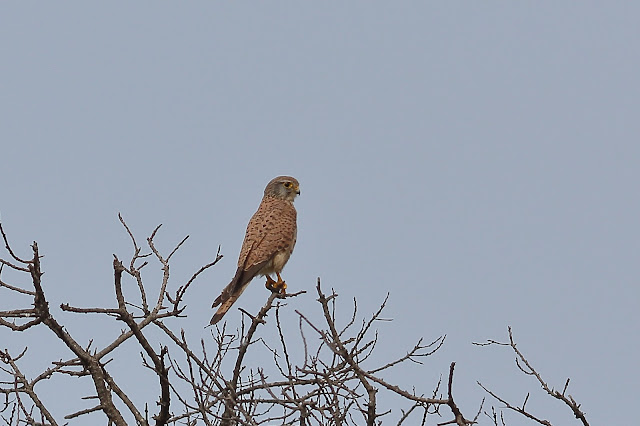

























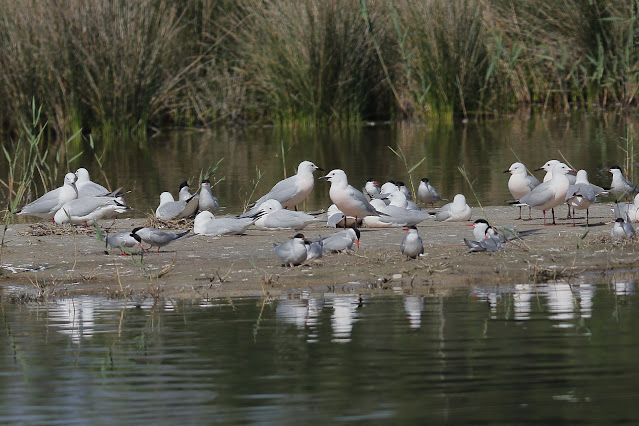

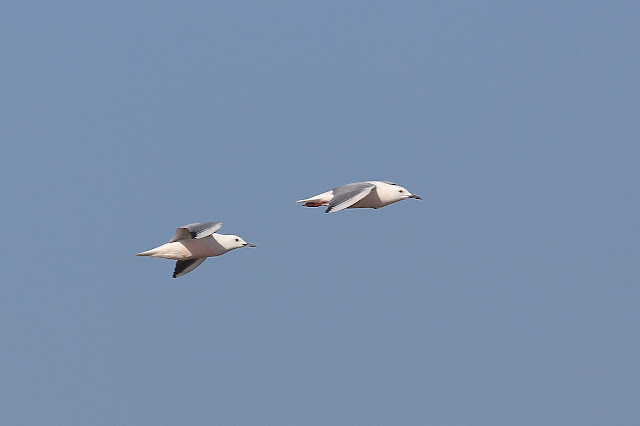
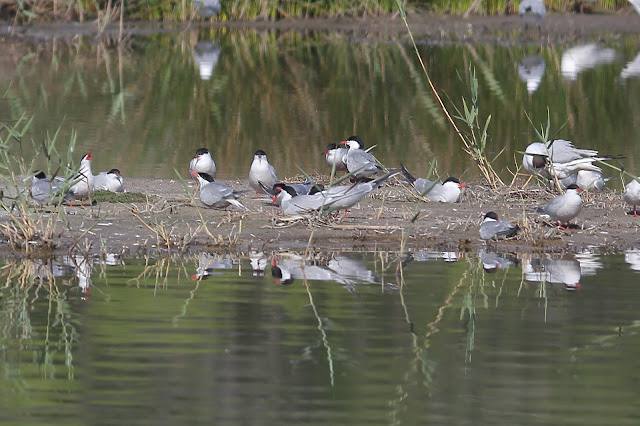

















.JPG)













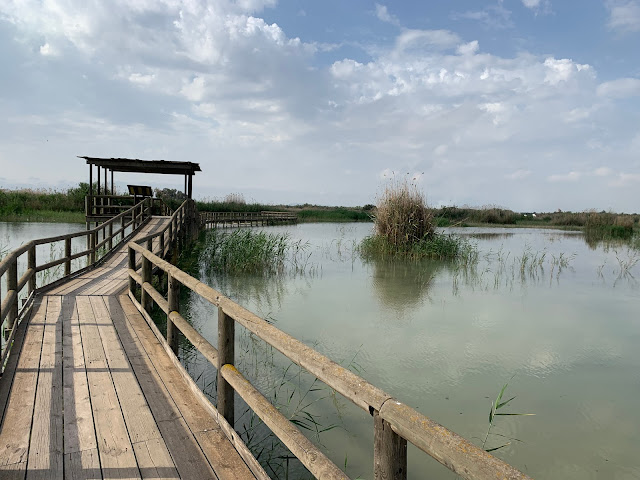
















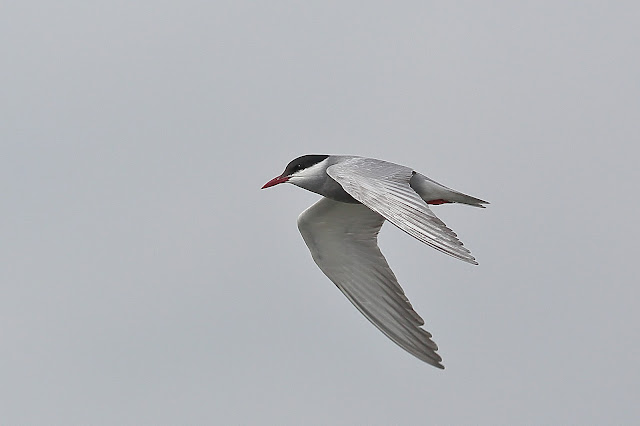











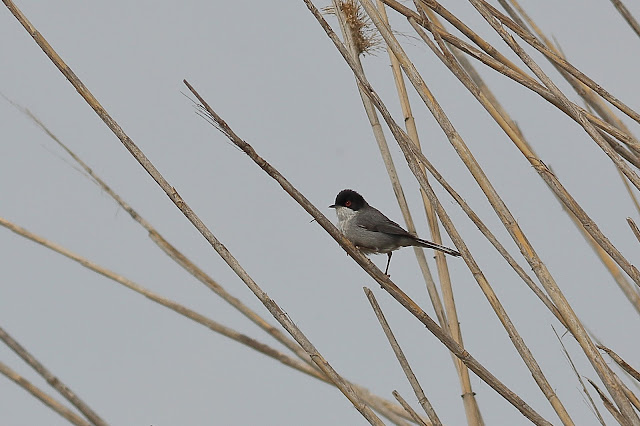

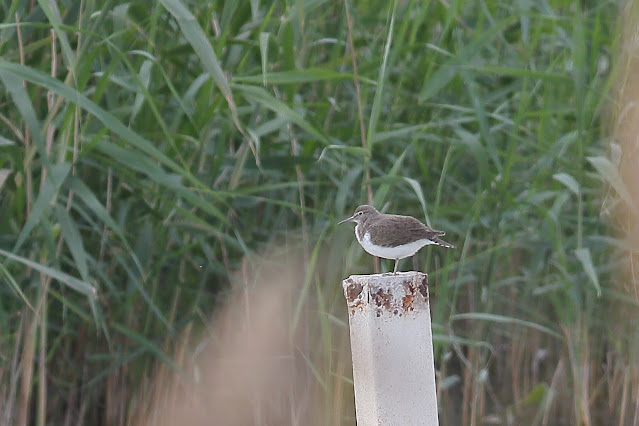





















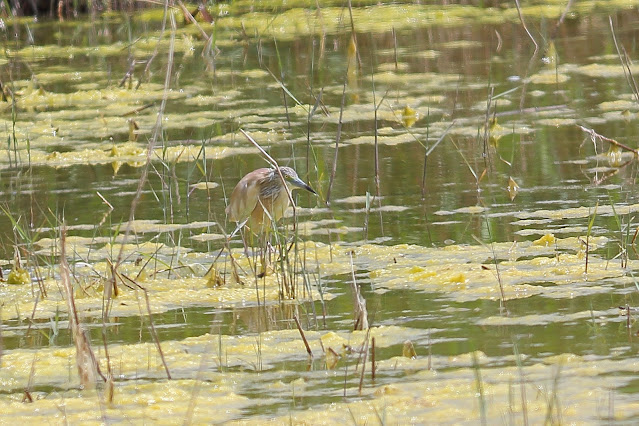









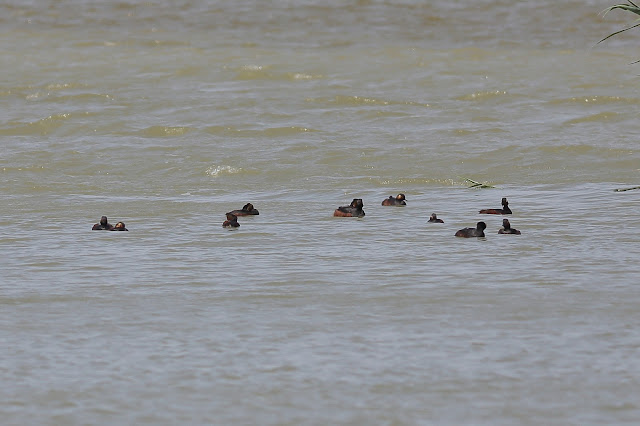
No hay comentarios:
Publicar un comentario